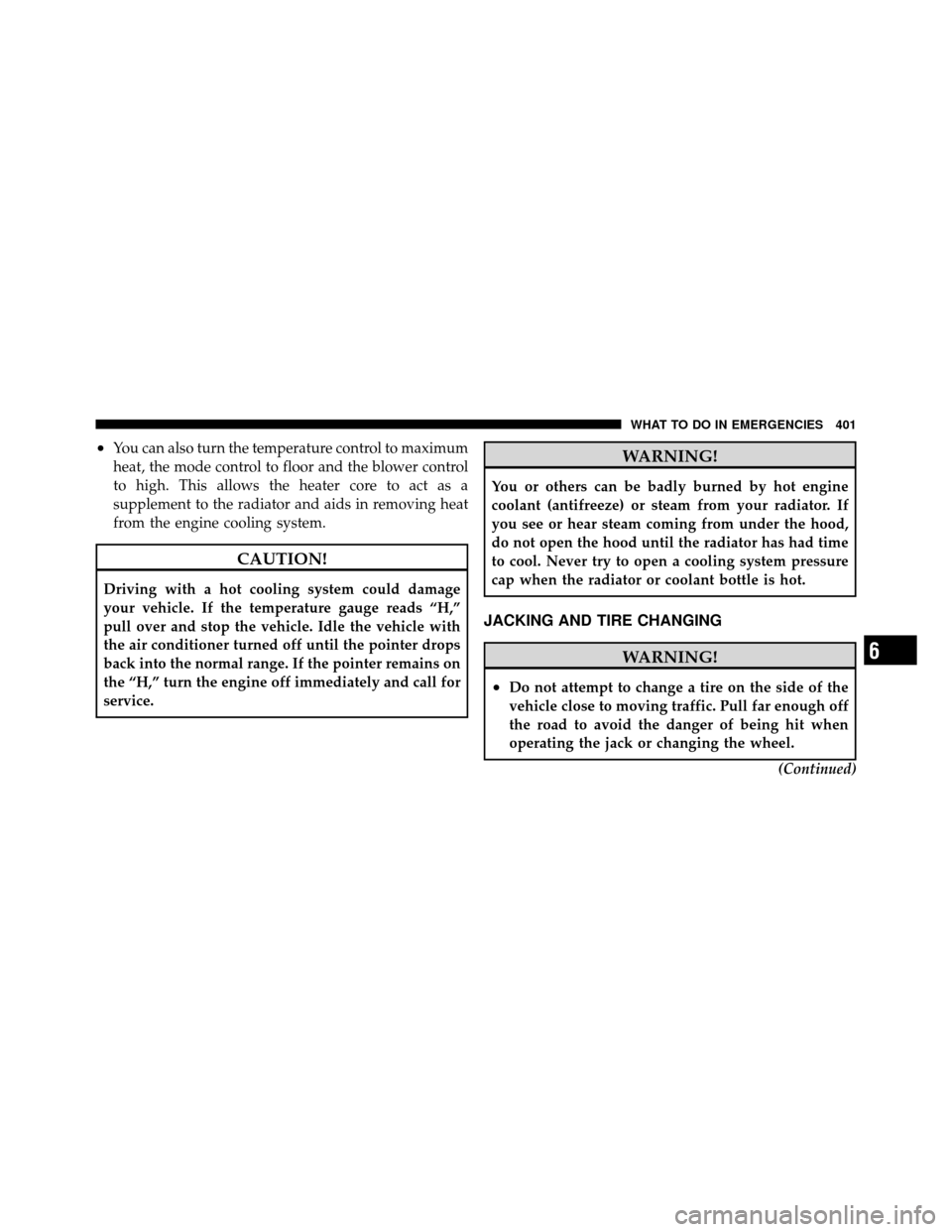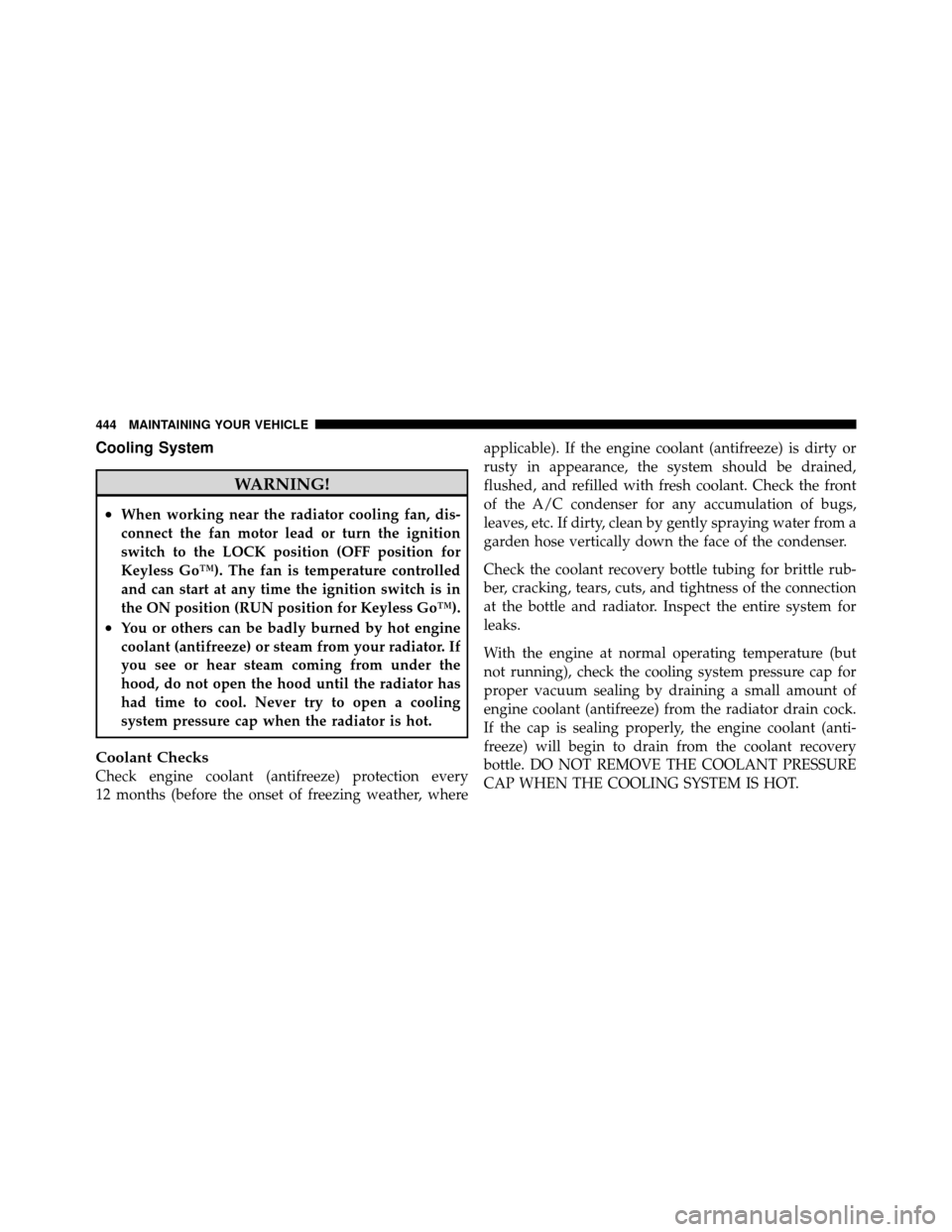Page 87 of 538

▫Things You Should Know About Your
Uconnect™ Phone .................... 116
▫ General Information .................. 124
� Voice Command — If Equipped ........... 124
▫ Voice Command System Operation ........ 124
▫ Commands ........................ 126
▫ Voice Training ...................... 129
� Seats .............................. 129
▫ Power Seats ........................ 130
▫ Power Reclining Seats ................. 131
▫ Lumbar Support ..................... 132
▫ Head Restraints ..................... 132
▫ Heated Seats — If Equipped ............ 134▫
Folding Rear Seat .................... 136
� Driver Memory Seat — If Equipped ........ 138
▫ Programming The Memory Feature ....... 139
▫ Linking And Unlinking The Remote Keyless
Entry Transmitter To Memory ........... 139
▫ Memory Position Recall ................ 140
▫ Easy Entry/Exit Seat (Available With
Memory Seat Only) ................... 141
� To Open And Close The Hood ............ 142
� Lights ............................. 144
▫ Headlight Switch .................... 144
▫ Automatic Headlights — If Equipped ...... 145
▫ Headlights On With Wipers (Available With
Automatic Headlights Only) ............ 145
86 UNDERSTANDING THE FEATURES OF YOUR VEHICLE
Page 143 of 538
•The Easy Entry/Easy Exit feature is disabled when the
driver seat position is less than 0.9 in (22.7 mm)
forward of the rear stop. At this position, there is no
benefit to the driver by moving the seat for Easy Exit
or Easy Entry.
Each stored memory setting will have an associated Easy
Entry and Easy Exit position.
NOTE: The Easy Entry/Easy Exit feature can be en-
abled or disabled through the programmable features in
the EVIC. Refer to “Electronic Vehicle Information Center
(EVIC)/Personal Settings (Customer-Programmable Fea-
tures)” in “Understanding Your Instrument Panel” for
further information.
TO OPEN AND CLOSE THE HOOD
Two latches must be released to open the hood.
1. Pull the hood release lever located under the left side
of the instrument panel. 2. Move to the outside of the vehicle and push the safety
catch to the left. The safety catch is located under the
center front edge of the hood.
Hood Release Lever
142 UNDERSTANDING THE FEATURES OF YOUR VEHICLE
Page 144 of 538
Use the hood prop rod (if equipped) to secure the hood in
the open position.
CAUTION!
To prevent possible damage, do not slam the hood to
close it. Lower the hood, until it is open approxi-
mately 6 in (15 cm), and then drop it. This should
secure both latches. Never drive your vehicle unless
the hood is fully closed, with both latches engaged.
WARNING!
Be sure the hood is fully latched before driving your
vehicle. If the hood is not fully latched, it could open
when the vehicle is in motion and block your vision.
Failure to follow this warning could result in serious
injury or death.
Hood Safety Catch
3
UNDERSTANDING THE FEATURES OF YOUR VEHICLE 143
Page 402 of 538

•You can also turn the temperature control to maximum
heat, the mode control to floor and the blower control
to high. This allows the heater core to act as a
supplement to the radiator and aids in removing heat
from the engine cooling system.
CAUTION!
Driving with a hot cooling system could damage
your vehicle. If the temperature gauge reads “H,”
pull over and stop the vehicle. Idle the vehicle with
the air conditioner turned off until the pointer drops
back into the normal range. If the pointer remains on
the “H,” turn the engine off immediately and call for
service.
WARNING!
You or others can be badly burned by hot engine
coolant (antifreeze) or steam from your radiator. If
you see or hear steam coming from under the hood,
do not open the hood until the radiator has had time
to cool. Never try to open a cooling system pressure
cap when the radiator or coolant bottle is hot.
JACKING AND TIRE CHANGING
WARNING!
•Do not attempt to change a tire on the side of the
vehicle close to moving traffic. Pull far enough off
the road to avoid the danger of being hit when
operating the jack or changing the wheel.(Continued)
6
WHAT TO DO IN EMERGENCIES 401
Page 415 of 538
Remote Battery Posts
WARNING!
•Take care to avoid the radiator cooling fan when-
ever the hood is raised. It can start anytime the
ignition switch is on. You can be injured by
moving fan blades.
•Remove any metal jewelry such as watch bands or
bracelets that might make an inadvertent electrical
contact. You could be seriously injured.
•Batteries contain sulfuric acid that can burn your
skin or eyes and generate hydrogen gas which is
flammable and explosive. Keep open flames or
sparks away from the battery.
1. Set the parking brake, shift the automatic transmission
into PARK and turn the ignition to LOCK.
1 — Remote Negative (-)Post
2 — Remote Positive (+)Post
414 WHAT TO DO IN EMERGENCIES
Page 445 of 538

Cooling System
WARNING!
•When working near the radiator cooling fan, dis-
connect the fan motor lead or turn the ignition
switch to the LOCK position (OFF position for
Keyless Go™). The fan is temperature controlled
and can start at any time the ignition switch is in
the ON position (RUN position for Keyless Go™).
•You or others can be badly burned by hot engine
coolant (antifreeze) or steam from your radiator. If
you see or hear steam coming from under the
hood, do not open the hood until the radiator has
had time to cool. Never try to open a cooling
system pressure cap when the radiator is hot.
Coolant Checks
Check engine coolant (antifreeze) protection every
12 months (before the onset of freezing weather, whereapplicable). If the engine coolant (antifreeze) is dirty or
rusty in appearance, the system should be drained,
flushed, and refilled with fresh coolant. Check the front
of the A/C condenser for any accumulation of bugs,
leaves, etc. If dirty, clean by gently spraying water from a
garden hose vertically down the face of the condenser.
Check the coolant recovery bottle tubing for brittle rub-
ber, cracking, tears, cuts, and tightness of the connection
at the bottle and radiator. Inspect the entire system for
leaks.
With the engine at normal operating temperature (but
not running), check the cooling system pressure cap for
proper vacuum sealing by draining a small amount of
engine coolant (antifreeze) from the radiator drain cock.
If the cap is sealing properly, the engine coolant (anti-
freeze) will begin to drain from the coolant recovery
bottle. DO NOT REMOVE THE COOLANT PRESSURE
CAP WHEN THE COOLING SYSTEM IS HOT.
444 MAINTAINING YOUR VEHICLE
Page 471 of 538
BULB REPLACEMENT
Low Beam Headlamp, High Beam Headlamp,
Park/Turn Lamp, Inner Park Lamp, and Outer
Park Lamp – 300 Models
1. Open the hood.
NOTE:Removal of the air cleaner filter housing may be
necessary prior to replacing bulbs in the headlamp
assembly on the driver side of the vehicle.
2. Twist the appropriate bulb and socket assembly coun-
terclockwise, and then pull it out of the headlamp
assembly.
3. Disconnect the bulb from the socket assembly and
install the replacement bulb.
4. Reinstall the bulb and socket assembly into the head-
lamp assembly, and then turn it clockwise.
1 — High Beam Headlamp Bulb
2 — Low Beam Headlamp Bulb
470 MAINTAINING YOUR VEHICLE
Page 525 of 538

Hazard Warning Flasher................... 400
Head Restraints ......................... 132
Head Rests ............................ 132
Headlight Washers ....................... 440
Headlights ............................ 472
Automatic ........................... 145
Bulb Replacement ...................... 470
Cleaning ............................ 458
Delay .............................. 145
High Beam/Low Beam Select Switch ........ 149
Lights On Reminder .................... 147
On With Wipers .................... 145,152
Passing ............................. 149
Switch .............................. 144
Time Delay .......................... 145
Heated Mirrors .......................... 95
Heated Seats ........................... 134
Heater ............................... 293
Heater, Engine Block ..................... 314 High Beam/Low Beam Select (Dimmer) Switch . . 149
Hitches
Trailer Towing ........................ 386
Holder, Coin ........................... 204
Holder, Cup ........................... 203
HomeLink� (Garage Door Opener) Transmitter . . . 190
Hood Release .......................... 142
Ignition ............................... 14
Key ............................... 12,14
Ignition Key Removal ..................... 14
Illuminated Entry ........................ 20
Immobilizer (Sentry Key) ................... 16
Infant Restraint ........................ 71,72
Inflation Pressure Tires .................... 226
Information Center, Vehicle ................. 230
Inside Rearview Mirror .................... 91
Instrument Cluster .................... 214,216
Instrument Panel and Controls .............. 213
524 INDEX